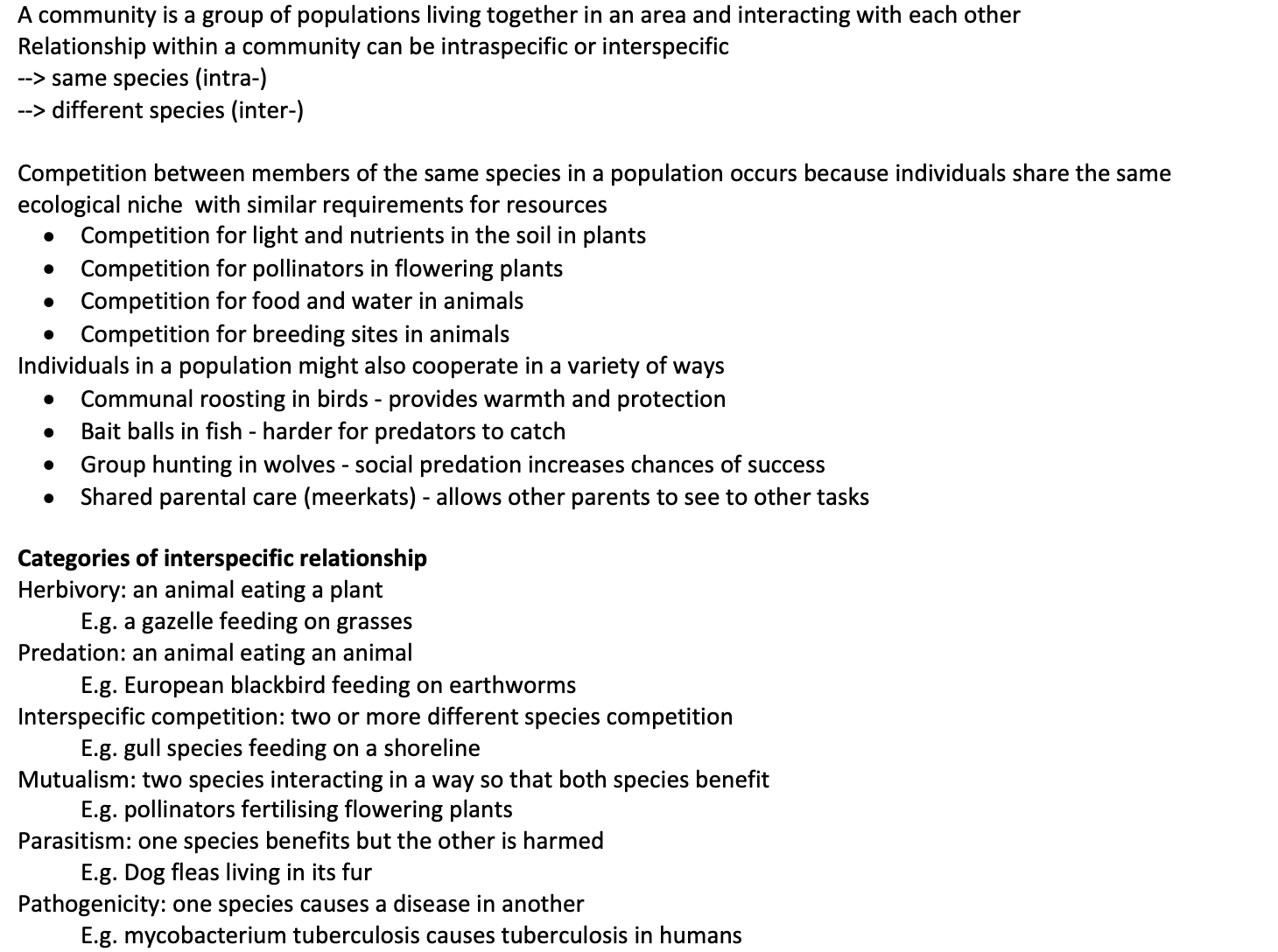Intraspecific Competition and Cooperation
A community is a group of populations living together in an area and interacting with each other
Relationship within a community can be intraspecific or interspecific
--> same species (intra-)
--> different species (inter-)
Competition between members of the same species in a population occurs because individuals share the same ecological niche with similar requirements for resources
Competition for light and nutrients in the soil in plants
Competition for pollinators in flowering plants
Competition for food and water in animals
Competition for breeding sites in animals
Individuals in a population might also cooperate in a variety of ways
Communal roosting in birds - provides warmth and protection
Bait balls in fish - harder for predators to catch
Group hunting in wolves - social predation increases chances of success
Shared parental care (meerkats) - allows other parents to see to other tasks
Categories of interspecific relationship
Herbivory: an animal eating a plant
E.g. a gazelle feeding on grasses
Predation: an animal eating an animal
E.g. European blackbird feeding on earthworms
Interspecific competition: two or more different species competition
E.g. gull species feeding on a shoreline
Mutualism: two species interacting in a way so that both species benefit
E.g. pollinators fertilising flowering plants
Parasitism: one species benefits but the other is harmed
E.g. Dog fleas living in its fur
Pathogenicity: one species causes a disease in another
E.g. mycobacterium tuberculosis causes tuberculosis in humans
